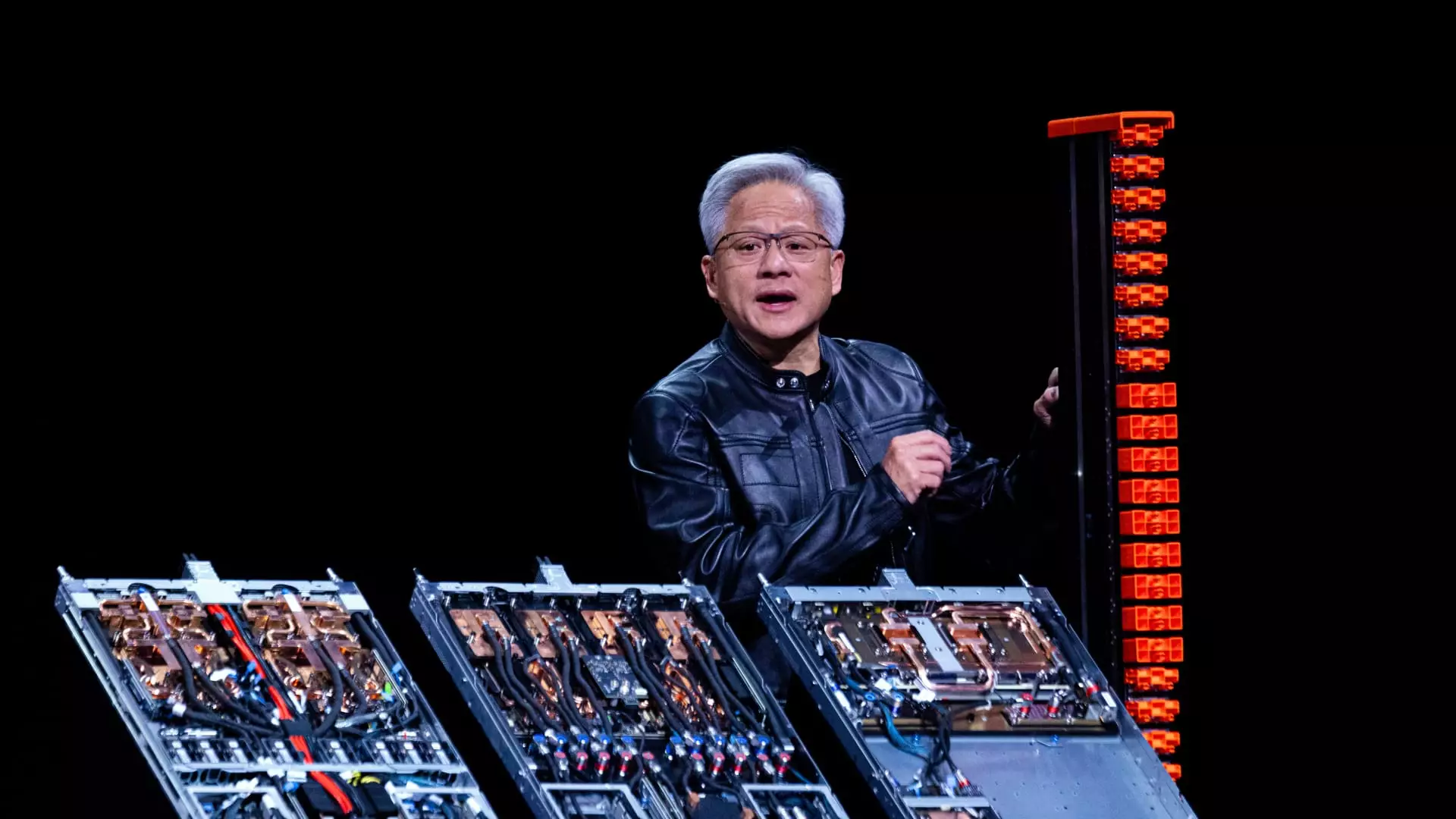In a strikingly audacious move, Nvidia CEO Jensen Huang recently unveiled a series of innovations aimed at reinforcing the company’s pivotal role in artificial intelligence (AI) development. Among these breakthroughs is the much-anticipated NVLink Fusion program, designed to enable a harmonious collaboration between Nvidia’s GPUs and third-party CPUs. By opening up this technology, previously restricted to Nvidia’s own chips, the company is effectively sending a clear message: It is not just a player in the AI arena; it aims to dominate it, even in collaboration with its rivals.
This shift reflects an initiative that marries Nvidia’s proprietary expertise with the versatility of non-Nvidia hardware, suggesting a future where different processors can coexist within the same computing structure. Huang emphasized the transformative potential of NVLink Fusion, describing it as a means for customers to create “semi-custom AI infrastructures.” This vision resonates with the current tech climate, which glorifies customization and flexibility, especially in rapidly evolving fields like AI.
The Implications of NVLink Fusion
However, this bold step is not without its caveats. Industry analysts have voiced concerns about the potential downsides of such an open approach. While allowing others to play in Nvidia’s sandbox may seem like a strategy of inclusivity it could also diminish Nvidia’s grip on the market for GPUs and CPUs. Rolf Bulk, an equity research analyst, voiced apprehension that NVLink Fusion might inadvertently lower the demand for Nvidia’s own CPUs, inviting competition from entities that once posed a significant threat to Nvidia’s dominance.
Moreover, it raises questions about the true nature of Nvidia’s intent. On one hand, it speaks to a collaborative spirit, but on the other, it may reflect an unyielding quest to expand Nvidia’s reach at the expense of its rivals. Chen’s framework suggests that Nvidia’s strategy isn’t solely about fostering openness; it is also a tactical ploy to ensure that it remains at the core of AI development, regardless of how the landscape shifts.
Collaboration vs. Competition
Interestingly, the NVLink Fusion program is accompanied by partnerships with significant names in chip manufacturing, including MediaTek and Qualcomm. This strategic networking not only places Nvidia in a central position within the AI ecosystem but also illustrates a fundamental contradiction. While Nvidia’s rival companies like Google and Amazon are independently crafting their own proprietary chips, Nvidia is offering a lifeline to maintain its relevance in an increasingly competitive market. It begs the question: Is Nvidia’s openness genuine collaboration, or a wolf dressed in sheep’s clothing?
As executives from major firms like Fujitsu integrate their custom CPUs with Nvidia’s architecture, the impact of this strategy is bound to ripple through the tech industry. Analysts like Ray Wang have articulated how NVLink Fusion consolidates Nvidia’s standing as the centerpiece of next-generation AI factories, even as it invites players who are traditionally viewed as competitors. This precarious balance of cooperation and competition places Nvidia in a unique position that could ultimately redefine industry standards.
A Broader Industry Footprint or Self-Sabotage?
Should NVLink Fusion gain widespread acceptance, it has the potential to solidify Nvidia’s position within the growing tapestry of industry players, from cloud service providers to ASIC designers. Huang’s discussions of the new NVIDIA DGX Cloud Lepton further underline this sentiment, as it attempts to unify cloud-based AI services and GPU resources, thereby creating a marketplace for AI developers. Yet, one must ponder whether this is a calculated risk or a blunder in ambition. By allowing a more porous ecosystem, Nvidia might become overly reliant on partnerships that could undermine the exclusivity and leverage that once defined its market stature.
Moreover, despite the initial allure of flexibility and integration, the long-term sustainability of this model remains uncertain. Nvidia must navigate the treacherous waters of growth while retaining its competitive edge against larger players and emergent technologies. If it miscalculates its capacity to integrate and adapt, the very alliances that are designed to strengthen its foundation could become the catalysts for its fragmentation.
While Nvidia’s latest announcements suggest a trailblazing vision for AI development, the inherent contradictions within its strategies invite skepticism. It could very well be a landmark moment for fostering innovation, or it might unravel into a scenario that challenges Nvidia’s longstanding dominance. The world will be watching closely as this story unfolds, eager to see whether Nvidia can truly harness the duality of collaboration and competition to propel an AI-driven future.

